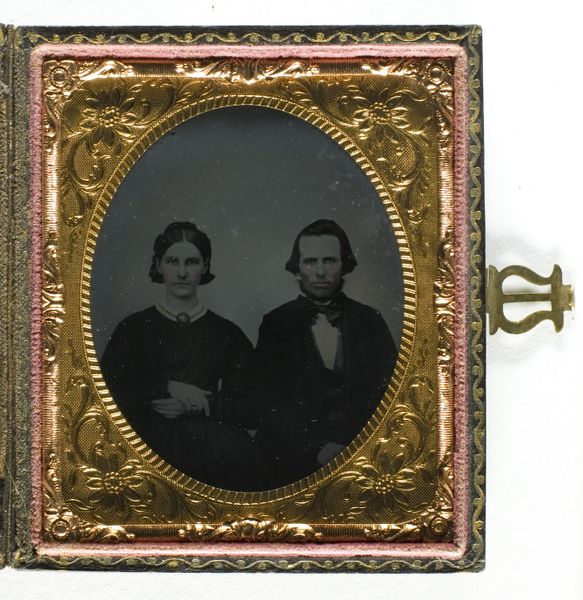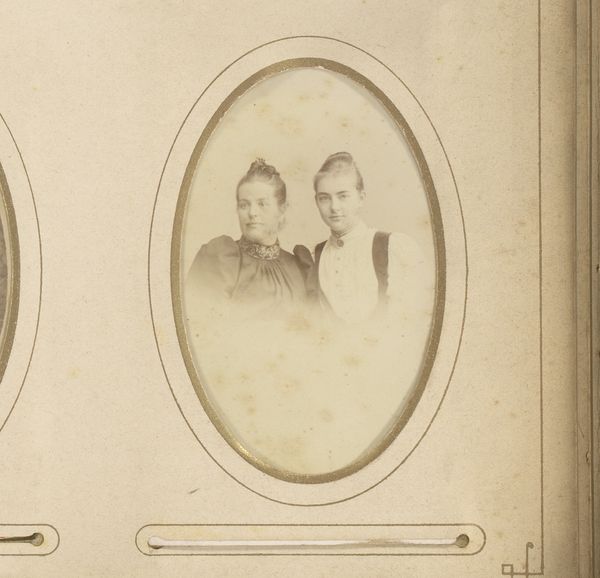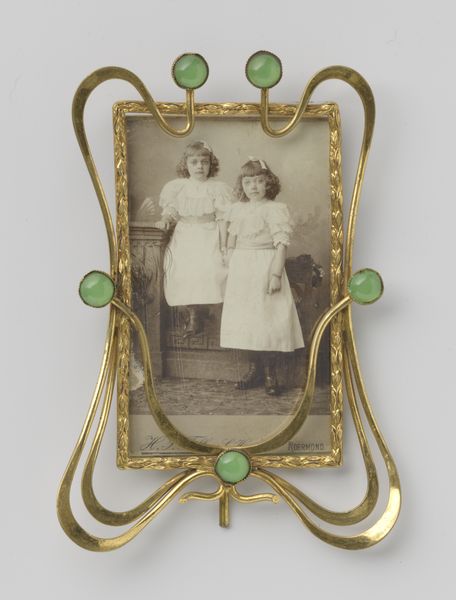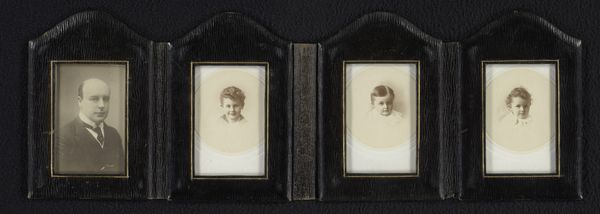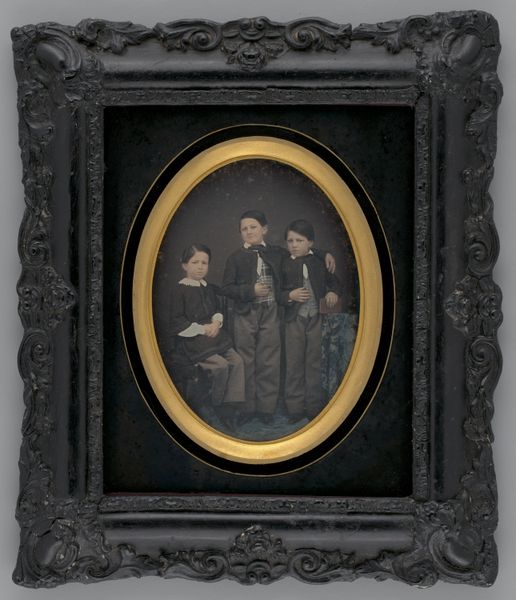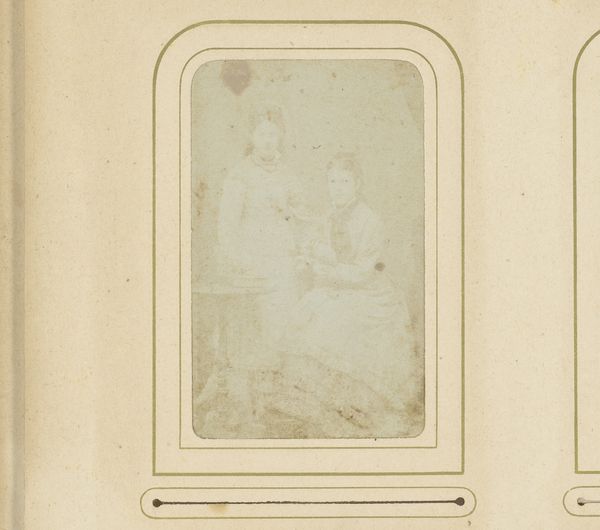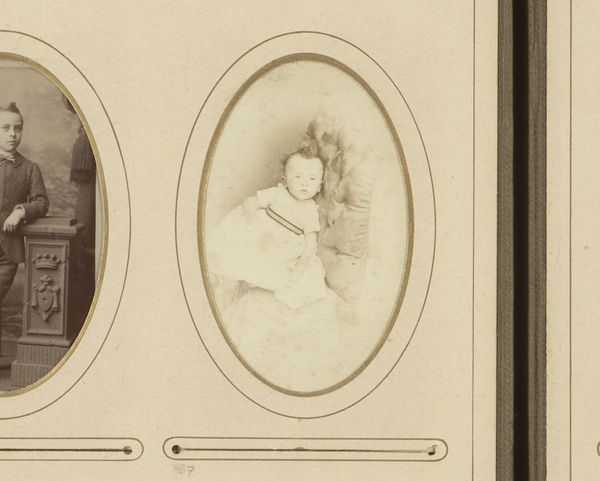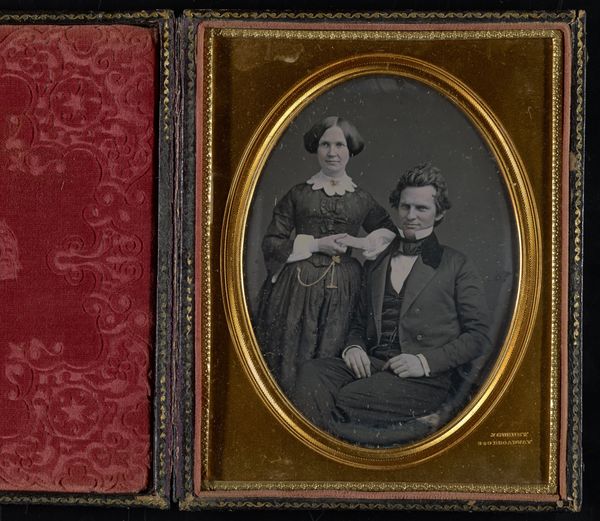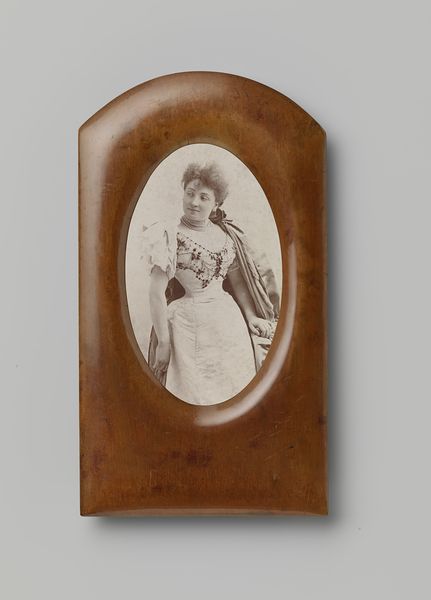
photography
#
portrait
#
16_19th-century
#
landscape
#
photography
#
child
#
united-states
Dimensions: 12.5 × 9.3 cm (5 1/2 × 4 1/4 in., sight, plate); 29.1 × 25.5 × 4.2 cm (frame)
Copyright: Public Domain
Editor: This is an untitled portrait of three children by Southworth & Hawes, made in 1852. It's a photograph, and the formality of the children's poses is striking. It almost feels staged in a way that is uncommon for contemporary photography. What can you tell me about it? Curator: What stands out to me is how this image exists at a pivotal moment in the construction of childhood within Western culture. Photography was still relatively new in 1852, offering a different type of portraiture accessible to the burgeoning middle class in the United States. Think about the socio-economic factors that would enable families to commission a photograph like this. What does this portrait tell us, consciously or unconsciously, about Victorian ideals of family and childhood? Editor: That's interesting! I hadn’t thought about that. It also makes me wonder what this portrait doesn't show, and who is excluded. How does class structure dictate who gets seen? Curator: Precisely. And even within the frame, note the carefully constructed representation. The children are dressed similarly, though not identically, implying both unity and individual identity. The dark clothing contrasts sharply with the pale faces, drawing our attention to their expressions. What do you make of their gazes? Editor: They look so serious. There is a hint of apprehension in their eyes, almost as if they're aware of the weight of the occasion. It’s more than just the seriousness of being captured in a formal setting; perhaps they were not always like this? Curator: The expressions capture a societal expectation of children from that time period, where decorum was a premium and childish innocence and freedom took on specific meanings. It also makes you consider the labor of childhood, which is frequently overlooked. It’s about making visible those whose stories have often been marginalized. Editor: I never thought of portraits in this way. Looking at art as a historical record opens new meanings. Thank you! Curator: Indeed. Art offers us a tangible link to the past, helping us critically examine societal structures and power dynamics.
Comments
No comments
Be the first to comment and join the conversation on the ultimate creative platform.



